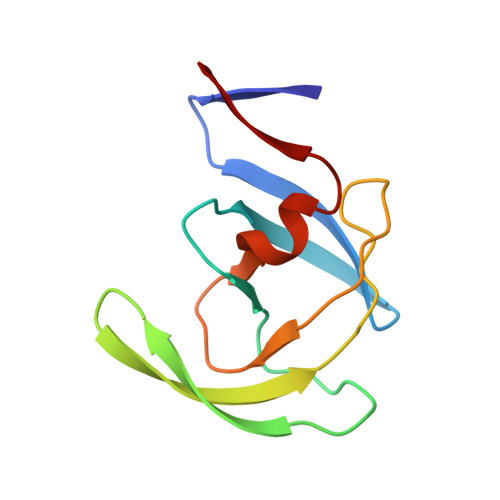Structure-based design of nonpeptidic HIV protease inhibitors: the sulfonamide-substituted cyclooctylpyramones.
Skulnick, H.I., Johnson, P.D., Aristoff, P.A., Morris, J.K., Lovasz, K.D., Howe, W.J., Watenpaugh, K.D., Janakiraman, M.N., Anderson, D.J., Reischer, R.J., Schwartz, T.M., Banitt, L.S., Tomich, P.K., Lynn, J.C., Horng, M.M., Chong, K.T., Hinshaw, R.R., Dolak, L.A., Seest, E.P., Schwende, F.J., Rush, B.D., Howard, G.M., Toth, L.N., Wilkinson, K.R., Kakuk, T.J., Johnson, C.W., Cole, S.L., Zaya, R.M., Zipp, G.L., Possert, P.L., Dalga, R.J., Zhong, W.-Z., Williams, M.G., Romines, K.R.(1997) J Med Chem 40: 1149-1164
- PubMed: 9089336
- DOI: https://doi.org/10.1021/jm960441m
- Primary Citation of Related Structures:
1HPO, 7UPJ - PubMed Abstract:
Recently, cyclooctylpyranone derivatives with m-carboxamide substituents (e.g. 2c) were identified as potent, nonpeptidic HIV protease inhibitors, but these compounds lacked significant antiviral activity in cell culture. Substitution of a sulfonamide group at the meta position, however, produces compounds with excellent HIV protease binding affinity and antiviral activity. Guided by an iterative structure-based drug design process, we have prepared and evaluated a number of these derivatives, which are readily available via a seven-step synthesis. A few of the most potent compounds were further evaluated for such characteristics as pharmacokinetics and toxicity in rats and dogs. From this work, the p-cyanophenyl sulfonamide derivative 35k emerged as a promising inhibitor, was selected for further development, and entered phase I clinical trials.
- Discovery Chemistry Research, Pharmacia and Upjohn, Kalamazoo, Michigan 49001, USA.
Organizational Affiliation:

















